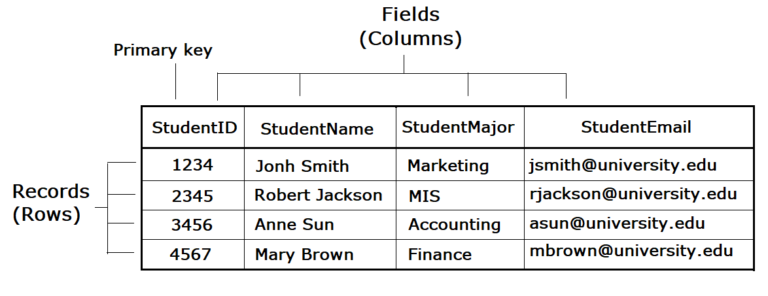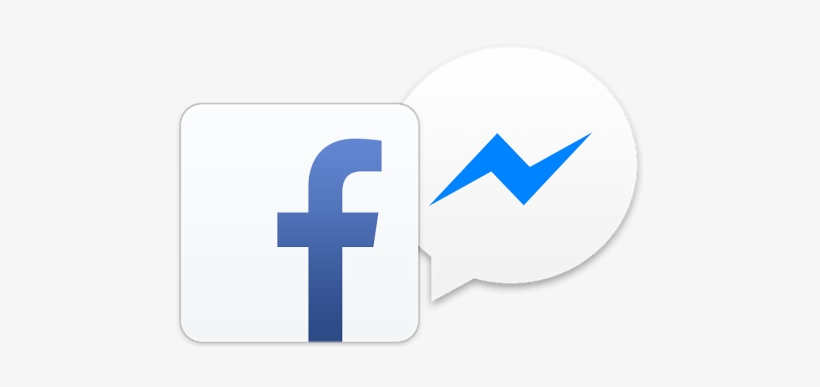Now let's take a look at the top 10 IP camera software. The list that we will show you contains free options with very complete selection details.
However, you should keep in mind that you can get better features in the PRO versions, but this will not be a problem, because our options also offer them.
If you have a mix of IP cameras from different brands in your security camera system, an IP camera viewer app can be quite useful.
Of course, there are a few different ways to monitor all of your cameras in one place. But a single app on your Android smartphone or tabloid is arguably the most convenient.
1. NetCam Studio
There is a free version of NetCam Studio, but if you want something more powerful, you can buy one of its licenses. These licenses allow you to use the software for as long as you like and will update the software for up to two years after purchase.
After the two-year period, you can keep the software running normally, but if you want upgrades, you'll have to purchase them. Updates should not be necessary unless you purchase a new piece of camera hardware and require a new type of camera software.
Characteristics
If you opt for the free version of NetCam Studio, you can use a camera feed from two sources. There is a watermark added to the camera images and you get five days notifications. There is also community support.
Paid features include up to 64 fonts, no watermarks, 250-day notifications, and you get priority support. After the 250 days are up, you can purchase upgrades to keep the notification system running.
Advantages
- The free version does not expire in any way other than notifications.
- You can use this software with a wide variety of camera brands.
- Updates are frequent enough to address most system-breaking bugs.
Disadvantages
- The interface needs to be updated to make it easier to use.
- They need to explain the "Add Source" procedure better.
- Troubleshooting audio problems is very difficult.
2. Security Eye
The reason Security Eye ranks so highly among the best IP camera software is that it's professional software that someone decided should be free. It is not open source security camera software , but the developers have decided that it should be offered for free.There used to be a free version where you would get 2 hours of free surveillance per day, but in 2019 the company removed their paid system . Will they continue like this or will they go back to paid subscriptions? Who knows, but you should get it while it's still free (if you can).
Characteristics
You can use a timer to determine when to start streaming video. You can also capture images as JPEG and then compress them. The system also allows you to receive alerts by loudspeaker. Also, it works with motion detection devices.
Advantages
- It comes with the Xvid MPEG-4 codec.
- The full version has no annoying screen and no recording limit.
- Security Eye's interface is quite modern for what is essentially a free piece of software.
Disadvantages
- It requires 1 GB of RAM and 2 GB of HHD space.
- Requires at least an Intel Pentium 1.8 processor.
- Icons should be more intuitive.
3. Perfect Surveillance
There are three types of free security camera software you can choose from. There's one for IP cameras, one for webcams, and some viewing software that people can use if they don't have something like VLC video viewer installed.
Characteristics
Simple icons and a clear interface are a great benefit. Determine when cameras start monitoring and configure your own layouts to suit your viewing style.
Advantages
- A simple software that works in a very simple way.
- Most of its icons are intuitive and let you guess what they do.
- The Perfect Surveillance system has motion detection and allows you to monitor up to 64 devices.
Disadvantages
- The installation seems too long.
- There are not enough instructions on how to connect your cameras.
- They don't explain how to capture and export screenshots.
4. Videon
There are times when freeware simply does its job well enough to warrant no complaints, and that's exactly what iVideon offers. There are many ways in which it can be improved, but there is nothing that requires harsh criticism.
Characteristics
One of its best features is facial recognition, but it's not very accurate. It allows a very good use of the mobile. You can view live and recorded images on your desktop or mobile device. It is also available for Mac OS X and Linux.
Advantages
- Online use and access from home is fully featured and free.
- It has smart notifications and has its own desktop and mobile apps.
- it doesn't take long to learn how to use the iVideon interface
Disadvantages
- Installation and connection of cameras requires a better tutorial.
- Embedding live video on your website is more complicated than it seems.
5. Xeoma
Another of the software for IP cameras that you will find among the most sought after is Xeoma. This software has many features, but most of them are locked for free users. It takes a long time to learn how to use the system, but it can be worth it if you have a lot of cameras. The paid version has all sorts of perks , from SMS texting to system health monitoring.
Characteristics
The lite version is the free version. It allows you to add four cameras with up to six modules in each chain. You can try and use the lite version as long as you want or get a free trial of the larger full-featured software.
Advantages
- You can record and monitor from four cameras.
- Updates are very frequent.
- This software works with almost all types of cameras.
Disadvantages
- About 90% of the features are locked for free users.
- Xeoma is difficult to learn and configure.
- The connection of many cameras is complicated because the system is difficult to learn.
6. Genius Vision
The Genius Vision system is a fairly advanced piece of software that is probably best used for business. If used at home, there are many functions that may never be used. It also works on mobile devices.
Characteristics
There are many features to play with, including a wide variety of settings to suit the many types of cameras this software can be used with. You can even support the company through Patreon and get more software extensions.
Advantages
- It works in depth with many types of camera.
- The tools are very sophisticated and precise.
- Dropdown menus are complicated and at the same time carefully designed.
Disadvantages
- Getting paid upgrades is more complicated than just buying from their website.
- Setting up remote features is difficult.
- You have to figure out how to use the software depending on the camera you have connected, because it is not always the same.
7. Deskshare IP Camera Viewer
The Deskshare IP Camera Viewer company has a great piece of security camera software that they repackage under many different names and then give away on their website. They do this because the software comes bundled with a lot of unwanted bloatware that the company is paid to promote.
Characteristics
Live recording, playback and split screen are available. You can use up to 4 cameras at a time and it works with 2200 different camera models. If your hardware allows it, you can pan, tilt, and zoom the camera.
Advantages
- It is compatible with many types of camera brands.
- You can configure floating watch windows if you wish.
- Adjust the properties of each camera individually.
Disadvantages
- Installation is very difficult to do correctly.
- Comes with bloatware and/or unwanted content
- IP software has the minimum features of all software of its kind.
8. Anycam
The Anycam system is a very normal piece of software, but it works with almost any type of camera. The interface is basic, but easy to use and configure. You will find that the free version is only limited in terms of record time, you can still use all of its features.
Characteristics
Anycam is mostly featureless. Works with motion detection cameras. Allows recording and playback of videos. Also, you can watch a live stream. Apart from that, it is a very basic but effective software.
Advantages
- The software seems to work with any type of camera.
- Anycam has a paid version where you just make a one time payment and get free upgrades for life .
- Installation and configuration is very simple.
Disadvantages
- Trying to find specific events on the timeline is very tricky.
- The free version only allows you to link two cameras.
- Recording is very limited with the free version.
9. ContaCam
Another of the best software for IP cameras is ontaCam. In the strictest terms, this software is not free. The developers ask you for a donation, but there is nothing that forces you to give them one. Plus, you can try out the software, and then if it turns out to be brilliant, you can always come back and donate to them.
Characteristics
Despite looking very complicated, the interface is self-explanatory. At first glance, it seems too condensed and full of features, but each one is explained very well. You can configure the cameras very precisely to the point where it is even possible to specify what seconds it starts and stops.
Advantages
- It is quite an advanced software.
- The interface design is very condensed without being confusing.
- You can use web servers, the Internet, or an intranet to receive live broadcasts.
Disadvantages
- The interface has no aesthetic decoration at all.
- ContaCam is learned through trial and error, and is quite complicated.
- The developers say that this will never work with mobile devices.
10. Agent DVR
The best thing about Agent DVR is that it is completely free because it is freeware. The sad part is that it was created by a developer who moved on to finer things and left the software hosted on some high usage servers. It is now distributed on freeware websites, which means that it is sometimes difficult to find a clean version. However, it is an excellent piece of camera software that still works for many types of cameras.
Characteristics
Agent DVR software enables video surveillance and recording with live streaming. You can use it with motion detection software and it still works for many different types of camera. It uses a reliable SSL algorithm for signal encryption, and it's very lightweight, which means it's not a huge drain on your device's CPU.
Advantages
- It is a very simple and lightweight software.
- It works from Windows.
- It still works with motion detection systems.
Disadvantages
- Agent DVR will become more obsolete as new cameras appear in the next few years.
- Updates will never happen beyond Windows 10.
- The interface looks very dated compared to modern camera software.
What is an IP camera?
When people say "IP camera," they usually mean a camera that uses the Internet in some way so it can do its job. A typical CCTV camera connects a camera to a computer via a cable. Sometimes the connection is remote. This means that the camera can be in one location and still be connected to another computer that is miles away.
However, many IP cameras are installed in a home and only travel a few feet/meters to the nearest computer. In short, an IP camera does not need a local recording device because the signal can be sent over the Internet or a Wi-Fi connection.
What is the camera software used for?
Most people and businesses use camera software to connect their cameras to their computers or smartphones. This is usually cheaper than buying dedicated recording hardware. The camera and its software are generally used to monitor live camera feeds and record them to a hard drive or the cloud.
What are the advantages and disadvantages of using an IP camera viewer app?
While there are quite a few ways to view all of your cameras in one place, the smartphone camera viewer app is a popular option. Here are the pros and cons of using a security camera viewer app:
Advantages
- Easy to set up.
- Camera support ONVIF, RTSP.
- Ideal for home automation.
- Very profitable.
Disadvantages
- Limited number of IP camera channels in front of NVR.
- Requires a mobile device or computer with good software features.
- CCTV over Wi-Fi is not 100% reliable.
What to look for in an IP camera app
These are the main things you should look for in IP camera software:
1. Automatic detection of ONVIF compliant cameras
Some IP camera apps can automatically scan your network and detect compatible IP cameras. You just need to type the username and password. This feature can greatly save you the time and hassle of typing IP addresses and port numbers. By the way, this will only work for ONVIF compliant cameras.
2. RTSP and P2P camera support
The industry standard for streaming CCTV video is the Real Time Streaming Protocol (RTSP). The beauty of RTSP is that as long as an IP camera can provide an RTSP stream and its viewing software supports RTSP, all you need is the RTSP stream URL and login details.
The viewing software does not have to be compatible with the camera itself, allowing you to use a wide variety of IP cameras with a single viewer software or application. Exactly what we want!
These days, some IP camera manufacturers enable P2P support on their cameras. This means that each device has a unique identification code (UID). You only need this code to add the camera to the camera viewer app.
Also, it will work outside your home network without any additional configuration. No IP address, port forwarding, etc. But P2P uses a third-party service, so your security and privacy are lower than when you use your own secure VPN tunnel.
3. Presets for popular IP cameras
While ONVIF support is sufficient to view your camera in the camera viewing application, you may want to take advantage of some additional features of your camera that do not work with ONVIF.
A good example is the PTZ controls of your ONVIF-compliant PTZ camera, such as Reolink RLC-423. Another example is the detection of alerts sent by PIR sensors on the indoor IP camera.
So what is the solution? Some of the IP camera software comes with additional presets for the most popular models. That means you can use most of the features that your native camera app has. This means win-win.
4. Motion detection and recording 24 hours a day, 7 days a week
If some of your cameras don't have motion detection or aren't very good at it, you can make the viewer app do it instead. Some IP camera applications can perform their own motion detection or use the camera's motion detection triggers.Some software can also record 24/7 to an SD card or a network device like a NAS. Recording to a separate network device is recommended, because the SD card will wear out quickly under continuous recording conditions.
5. Change the camera stream
For most smartphones and tablets , decoding multiple streams of 1080p or higher is too resource intensive. What usually happens cause dropped frames or blank screens.
Fortunately, any good IP camera will have a high-quality stream and a stream optimized for lower-quality mobile devices. A good viewer app will allow you to switch between high-quality and low-quality streams.
Also, the best IP camera software will automatically choose the mobile optimized stream if you are on a 3G/4G mobile network. This will also keep your data usage low.
6. Two-way audio
If your IP camera supports two-way audio and you have a speaker and microphone, you can use the viewer app to chat with someone on the other end. Of course, your camera must support full duplex audio to have a natural two-way conversation. On the other hand, if your camera is like most cameras and you only have half-duplex audio, unfortunately your conversations will be walkie-talkie type.
7. Support recording and background audio
If you are using your IP cameras as a monitor or DVR/NVR, the last thing you want is to keep your mobile phone screen on, or worse, the active viewing app on the screen at all times.
So the answer is background audio support, which keeps the app recording and sound from your cameras playing, even if you're looking at other apps or if you lock/turn off the phone screen.
8. Chromecast and Android Wear compatibility
Do you have a portable device? So Android Wear compatibility is great. Chromecast compatibility lets you turn your TV into a giant CCTV monitor. This is extremely fun and necessary in certain cases.
9. API and/or web server for remote control
Integrating home security camera systems with home automation is the holy grail for DIY enthusiasts. What really helps is getting the viewer app to perform certain actions when triggered by the home automation system or vice versa. An API or HTTP web server running on the Android device enables such functionality.
10. Reliability
It goes without saying that you want a stable and reliable app that works day after day. This is especially important if you're going to rely on it for baby tracking, 24/7 recording, and more.
11. Cost
While there are dozens of IP camera software out there, most of them are riddled with ads and other nasty things you don't want on your computer. So this is one area where you definitely get what you pay for.
So how do you choose the best security camera software?
In most cases, the best software is simply the software that works with your cameras and offers all the features you need. Compatibility is the first concern, but you also want it to work well with your device.
For example, if your cameras have a zoom function, but your software does not allow zooming, then that software is not the best for you. Beware, this works with motion detection, because it is a function that can be used independently.
If you are using Linux, then you want security camera software for Linux. And some people insist that their software allows them to monitor their cameras from their smartphones. The best thing about free security camera software is that you can try it out first without the risk of losing your money.
If I need to edit my videos, what is the best video editor?
Exporting or downloading content from your camera software is a complicated job. Often, you need a good video editor and trimmer to make your video clips usable. This is especially true when video recordings can last up to 90 days at a time.
Conclusion
The above content published at Collaborative Research Group is for informational purposes only and has been developed by referring to reliable sources and recommendations from experts. We do not have any contact with official entities nor do we intend to replace the information that they emit.
Katheryn is a corporate attorney and finance specialist, conducting research daily to get you closer to financial security and freedom (even if you're just getting started). Her +600 articles published in Collaborative Research Group have already helped thousands of readers on the internet. .
Leave a reply
Your email address will not be published. Required fields are marked *Recent post

Does Instagram Notify When You Screenshot a Post of Someone?

Difference Between Field And Record In Database

The difference between rows and columns in Excel

